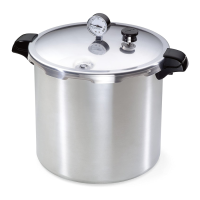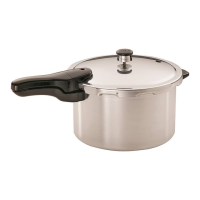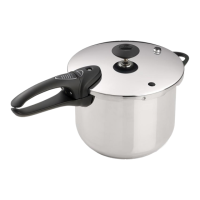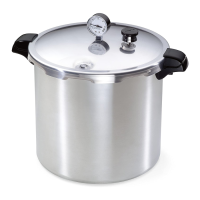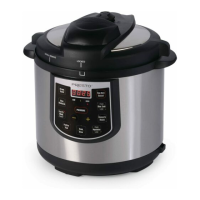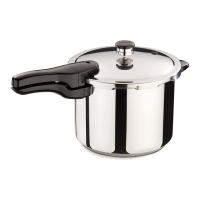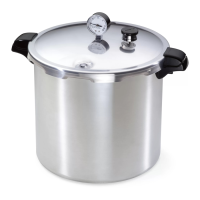12
PLUMS
Stem and wash rm, ripe plums. If plums are to be canned whole, prick each side with a fork. Freestone varieties may be cut in halves
and pitted.
Hot Pack: Add plums and syrup (page 10), juice, or water to a large pot and bring to a boil. Boil 2 minutes. Cover pot and let stand
20 to 30 minutes. Pack hot plums in hot jars, leaving ½-inch headspace. Cover with hot syrup, juice, or water, leaving
½-inch headspace. Remove air bubbles. Prepare jar rims. Adjust two-piece lids.
Raw Pack: Pack raw plums rmly in hot jars, leaving ½-inch headspace. Cover with hot syrup (page 10), juice, or water, leaving
½-inch headspace. Remove air bubbles. Prepare jar rims. Adjust two-piece lids.
Pressure canning: Process at 6 pounds pressure, pints and quarts 10 minutes. For processing above 2,000 feet altitude, see page 10 for
recommended pounds of pressure.
Boiling water canning: Process pints 20 minutes and quarts 25 minutes. For processing above 1,000 feet altitude, see page 10 for
recommended time.
RHUBARB
Trim off leaves. Wash stalks and cut into ½-inch to 1-inch pieces.
Hot Pack: Add rhubarb and ½ cup sugar per quart of rhubarb to a large pot. Let stand until juice appears. Heat rhubarb slowly to
boiling. Pack hot rhubarb in hot jars, leaving ½-inch headspace. Remove air bubbles. Prepare jar rims. Adjust two-piece
lids.
Pressure canning: Process at 6 pounds pressure, pints and quarts 8 minutes. For processing above 2,000 feet altitude, see page 10 for
recommended pounds of pressure.
Boiling water canning: Process pints and quarts 15 minutes. For processing above 1,000 feet altitude, see page 10 for recommended time.
CANNING TOMATOES AND TOMATO PRODUCTS
Tomatoes and tomato products may be safely processed using the boiling water method (step-by-step instructions begin on page 20) or
pressure canning method. However, for some tomato products, the pressure canning method may result in a more nutritious canned product.
Acidifying Tomatoes and Tomato Products
Tomatoes have a pH close to 4.6, which means it is necessary to take precautions to can them safely. First, carefully choose the tomatoes
for canning. Use only tomatoes that are disease-free, preferably vine-ripened, and rm.
Second, an acid must be added to tomatoes whether they are processed using the boiling water method or pressure canning method. To
ensure the safety of whole, crushed, or juiced tomatoes, add 1 tablespoon bottled lemon juice (not natural juice) or ¼ teaspoon citric acid
per pint jar; for quarts, add 2 tablespoons bottled lemon juice or ½ teaspoon citric acid.
Salt
Tomatoes and tomato products may be canned with or without salt. Salt is used only for avor, as it is not used in a large enough quantity
to prevent spoilage. If salt is desired, use only canning or pickling salt. Table salt contains anti-caking agents that may cause cloudiness
in the liquid inside the jars.
The recommended amount of salt is ½ teaspoon for each pint jar, 1 teaspoon for each quart jar.
Altitude Adjustments
When pressure canning at altitudes of 2,000 feet or below or boiling water canning at altitudes of 1,000 feet or below, process according
to specic recipe. When canning at higher altitudes, process according to the following charts.
Altitude and Pressure Chart for Pressure Canning Tomatoes Altitude Chart for Boiling Water Canning Tomatoes
Altitude Pounds of Pressure Altitude Increase Processing Time
2,001–4,000 ft. 12 pounds 1,001–3,000 ft. 5 minutes
4,001–6,000 ft. 13 pounds 3,001–6,000 ft. 10 minutes
6,001–8,000 ft. 14 pounds 6,001–8,000 ft. 15 minutes
Processing time is the same at all altitudes.

